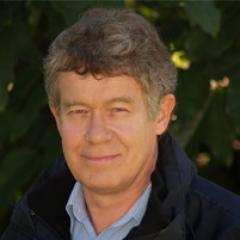Background
Introduced animals threaten many native wildlife species with influences such as predation, competition, by destroying suitable habitat, and disease. Over millions of years Australian species have evolved to become adapted to the Australian environment, but they did not evolve with introduced animals. Introduced predators can have more severe impacts on native wildlife than native predators and they can have much greater suppressive impacts, be able to cause decreases in regional biodiversity, and cause prey to be much more susceptible to extinction forces (Salo et al. 2007). Competition by introduced species reduces available resources (e.g. food, resting and nest sites) for native species, and introduced herbivores modify habitats that can result in native species being even more susceptible to predation.
Habitat loss and fragmentation has been caused by extensive vegetation clearing since European settlement. When native vegetation is cleared habitats become isolated and disconnected. This fragmentation of habitat in turn isolates animal communities making small populations more susceptible to predation and local disturbances. Habitat loss and fragmentation both threaten the survival of many Australian species.
Many of the interactions between introduced and native predators (e.g. foxes and quolls) and competitors (e.g. pigs, goats and wallabies) are poorly understood and good knowledge about these interactions is necessary to be able to implement strategies to conserve native species.
Aims
- Identify populations of native species that are under threat from habitat loss and fragmentation
- Determine the introduced and native species that are potentially interacting
- Implement monitoring and data collection to estimate population sizes and identify interactions between species
- Determine key habitat requirements for the different species
- Implement interventions to mitigate any adverse interactions
Methodology
Locations where interactions are most likely to occur are identified and detailed habitat assessments (i.e. soil, landscape characteristics e.g. slope, floristics, canopy cover) undertaken. The methodology used to determine the presence of a species and its population size is partly dependent on its size, its habitat preference, behaviour etc. A range of methods can be used to determine the presence of a species and an estimate of its population size e.g. trapping, soil plots, spotlighting. Remote sensing cameras can be used to determine population sizes and the ranges of small, nocturnal, cryptic and low density species. Tagged and radio-collared animals (from trapping) as well as unique coat/fur marking can be used to identify individual animals. DNA collected from faeces can be analysed to also identify individuals and determine genetic differences between populations. Analysis of faeces can also provide information about the diet of an animal.
Feral animal predation of native species can be determined through analysis of feral animal faeces and gut contents of animals killed as the result of any existing predator control program occurring at the study site.

Expected outcomes
This research will identify populations of native species that are under threat from habitat loss and fragmentation and determine how and introduced and native species are interacting in that location. The research should be able to estimate population sizes and determine key habitat requirements for the different species. From this management can be implemented to control introduced species and mitigate any adverse impacts on native species.
Reference
Salo, P, Korpimäki, E, Banks, PB, Nordström, M & Dickman, CR 2007, 'Alien predators are more dangerous than native predators to prey populations', Proceedings of the Royal Society B: Biological Sciences, vol. 274, no. 1615, pp. 1237-43.
Acknowledgements
This research is in collaboration with the Queensland Trust For Nature (QTFN) http://www.qtfn.org.au



